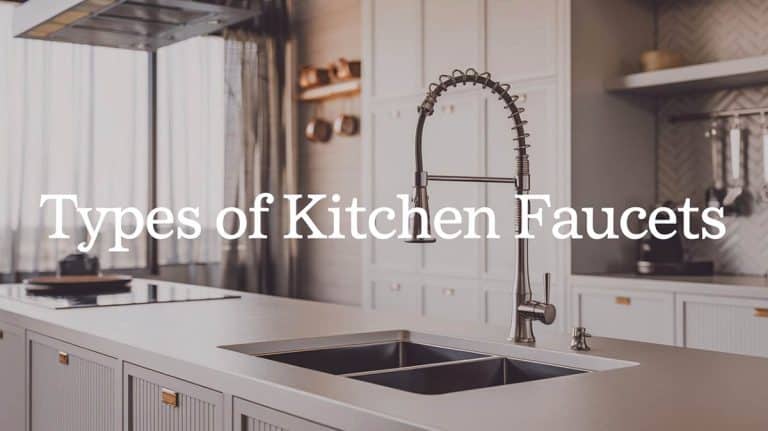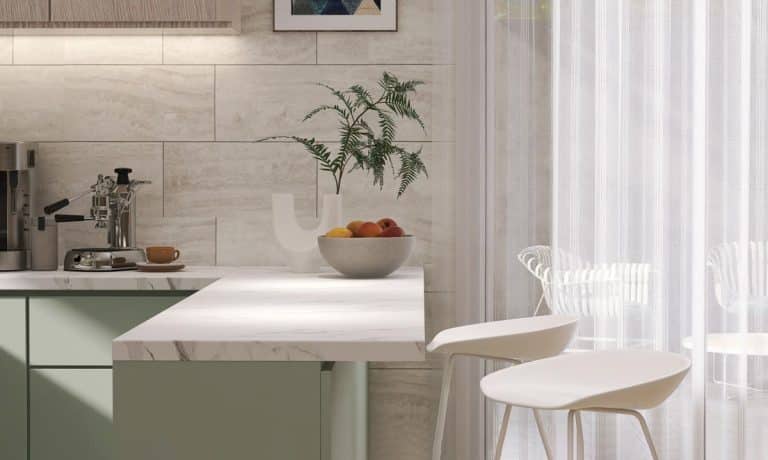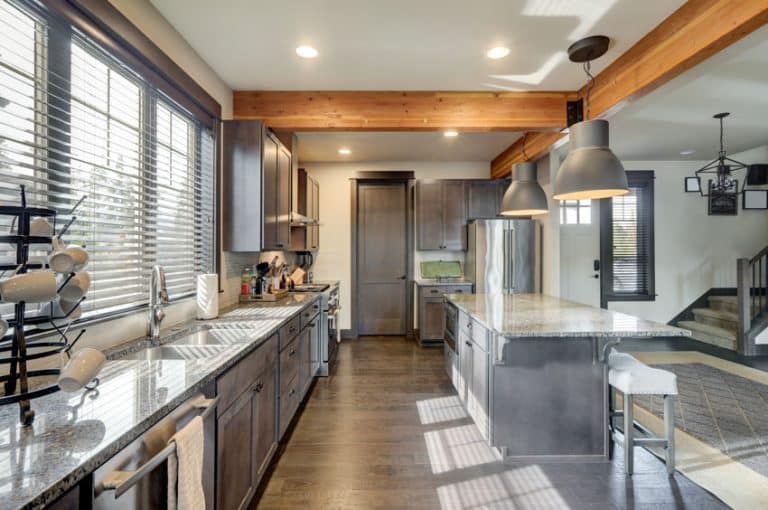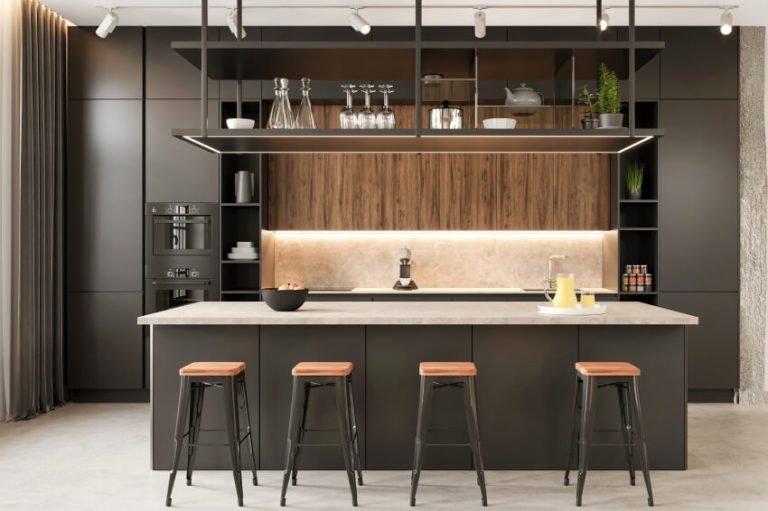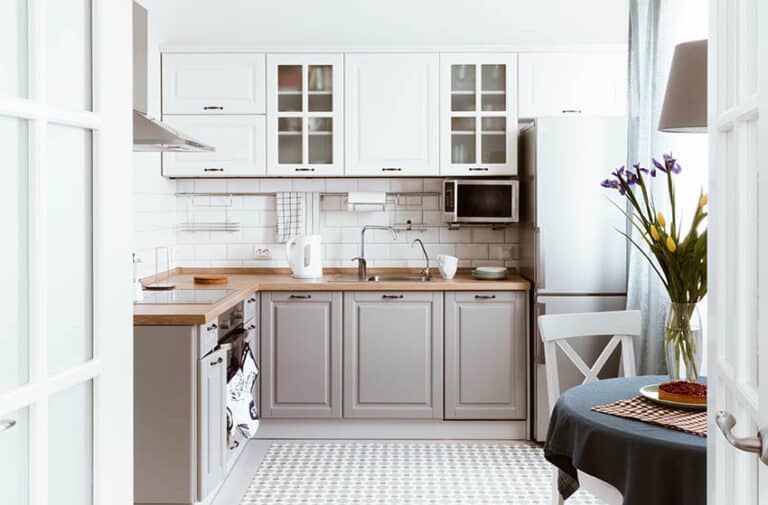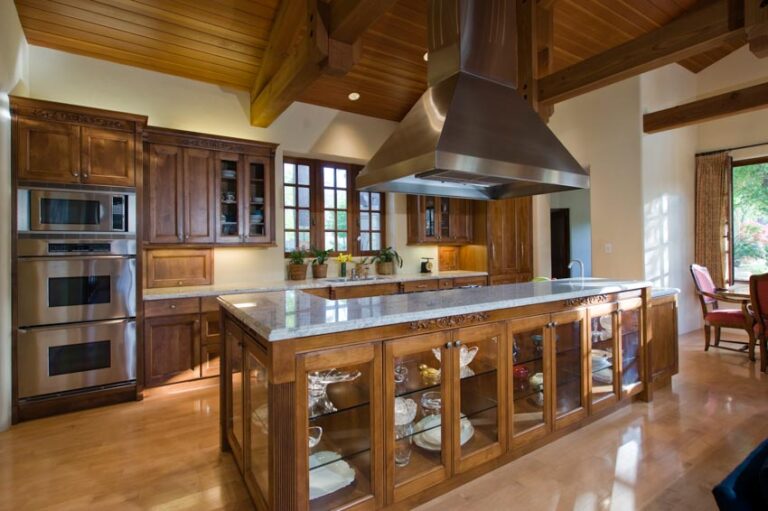Poplar Kitchen Cabinets (Designs & Pros and Cons)
You’ve probably seen oak or pine cabinets, right? They’re pretty common. But have you ever thought about poplar kitchen cabinets? It’s not just another wood; it’s a game changer.
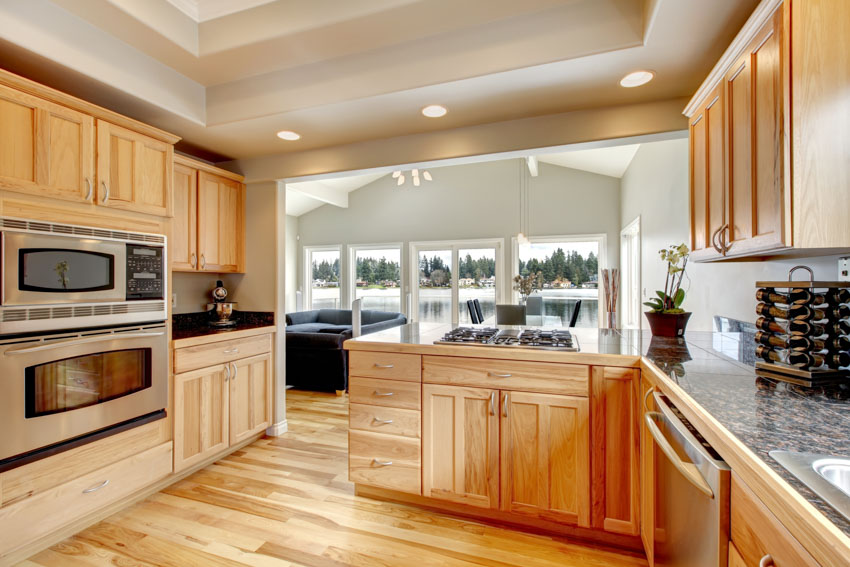
Poplar has this unique vibe that can transform your kitchen into something special. It’s sturdy yet has a kind of understated elegance that really sets it apart. Plus, it’s not as overused as some other woods, so your kitchen will have its own personality.
If you’re on the fence about what wood to choose for your kitchen revamp, let me throw in my two cents about poplar. It’s widely available, which is great for keeping your project on schedule and within budget. Beyond cabinets, it’s a champ for creating cozy furniture, playful toys, and eye-catching decor.
What Are Poplar Wood Cabinets?
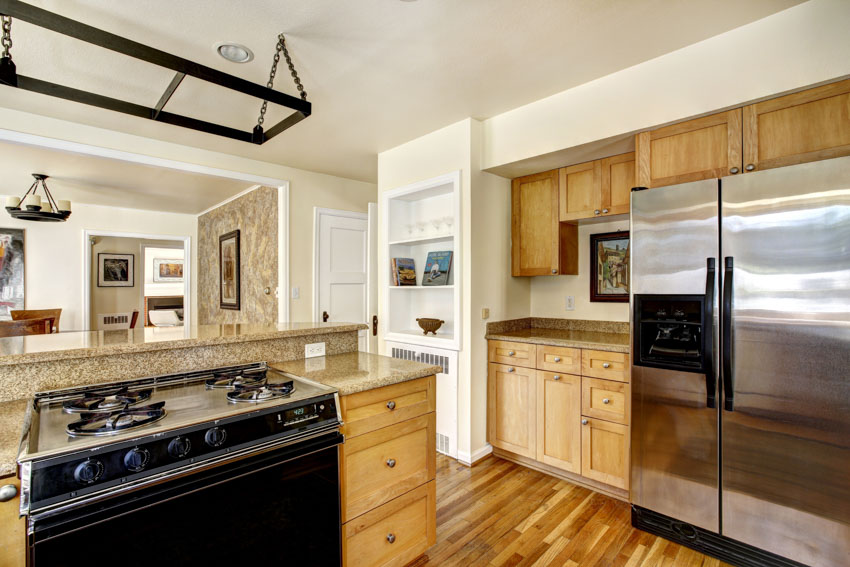
Poplar wood is a type of hardwood that comes from the tulip poplar. The wood is light brown to creamy yellow in color, with green or brown streaks running through the heartwood of the board.
The grains are straight and uniform in texture. It is lightweight and easy to work with, making it a good choice for interior furniture components like kitchen cabinets. Some characteristics that make it the most popular hardwood species used in the industry are its workability and cost-effectiveness.
This wood has a medium density, which makes it easy for paints and glues to adhere exceptionally well. There are two types that are readily available in the United States. These are the tulip poplar tree and the rainbow poplar tree.
• The former grows quickly and is easy to find in stores. It is a good choice for woodworking because it grows quickly, and it is easy to find straight boards with no knots.
It is reasonably stable and will do well in many environments. The Janka hardness rating for this material is 540 pounds-force (lbf), which is softer than most other American hardwoods.
• Sometimes, you will see a board marked with “rainbow poplar.” That means the wood has been stained with minerals from the soil. This can happen if the tree grows in an area with high levels of minerals.
The wood will have different colors, like green, brown, purple, and red. However, these colors may not last for very long because this material is photo-reactive and tends to brown quickly.
Poplar Wood Hardness
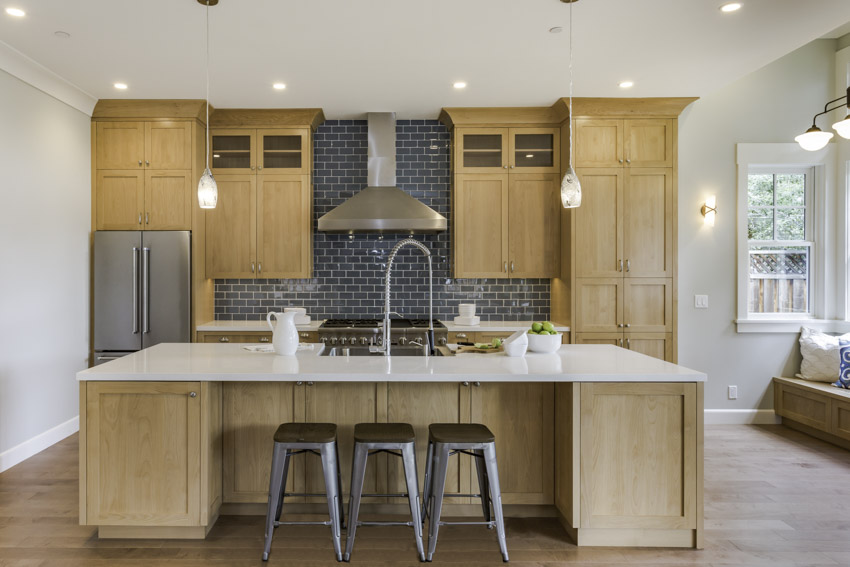
This material is a strong type of wood. It is denser, stronger, and more resistant to bending than many other woods. This makes it a popular choice for cabinets, furniture, picture frames, and many other items. It is more robust than any softwood but is not as strong as most hardwoods compared to density or resistance to bending.
The density of wood is a measure of how strong it is. The higher the density, the stronger the wood. It has a specific gravity of 0.42, higher than most softwoods and some hardwoods. This makes it a strong choice for construction and woodworking projects.
This wood’s strength can also be determined by its compressive strength at 5540psi, stiffness at 1.58Mpsi, and bending strength at 10100psi. Additionally, the Janka hardness scale of the wood is assessed at 540.
Poplar Kitchen Cabinets Pros And Cons
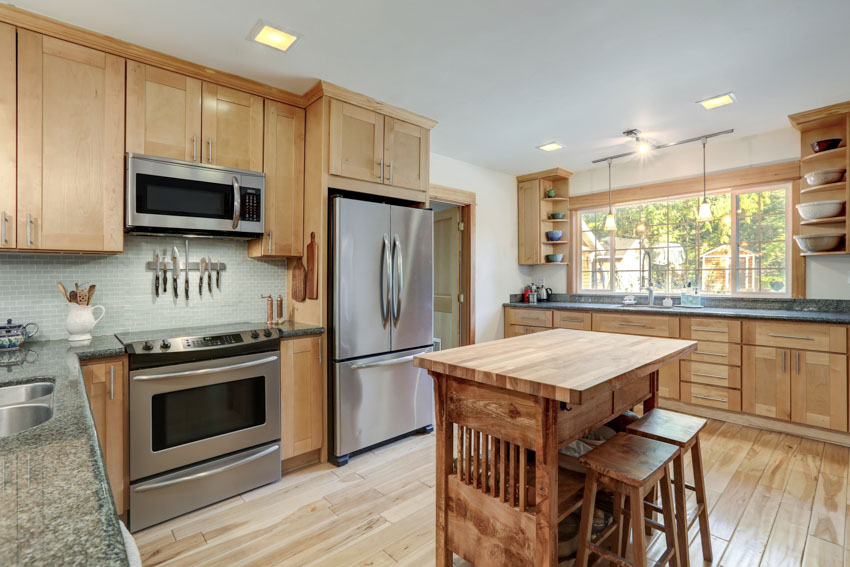
Poplar natural wood kitchen cabinets are a popular choice for homeowners looking for an affordable option. But these cabinets come with a few disadvantages you should be aware of before making your purchase.
Pros of Poplar Kitchen Cabinets
The pros of this cabinetry are as follows:
• They are lightweight, making them an excellent choice for interior furniture components such as kitchen cabinets, dining tables, and chairs.
• It is the easiest hardwood to work with since it is soft and often straight-grained, it planes well, and cutting joinery in this wood is effortless.
• This type of wood is the standard choice for kitchen cabinets that need to be painted because they can take paint very well.
• It is the most common utility hardwood in the US, which can be used for rough framing.
• They are inexpensive and considered one of the most affordable hardwoods in the Eastern United States because of their high availability.
Cons of Poplar Wood Cabinets
The cons are as follows:
• They are not exceptionally durable and can easily dent or scratch
• These cabinets are not very resistant to moisture and humidity; they can easily twist, warp, swell, or rot
• Although this wood is one of the most popular paint-grade woods, because of its low hardness rating, it dents easily, and so the finish on them tends to wear off quickly
• The constant movement of swelling, expanding due to humidity, and shrinking when it gets dry causes the paint to crack and chip
• They are highly porous, and their end grain is very absorbent, which means they will require additional coats of primer and paint
• Cabinets made of this material do not readily absorb stains
• They are not particularly good at hiding fingerprints or dirt
• It can be pretty expensive compared to other types of wood cabinetry.
• This cabinetry is soft and not as durable as some other hardwoods for a hard-use environment like a kitchen.
• This material is a less stable wood due to its broader and less dense annual rings
Poplar Cabinet Doors
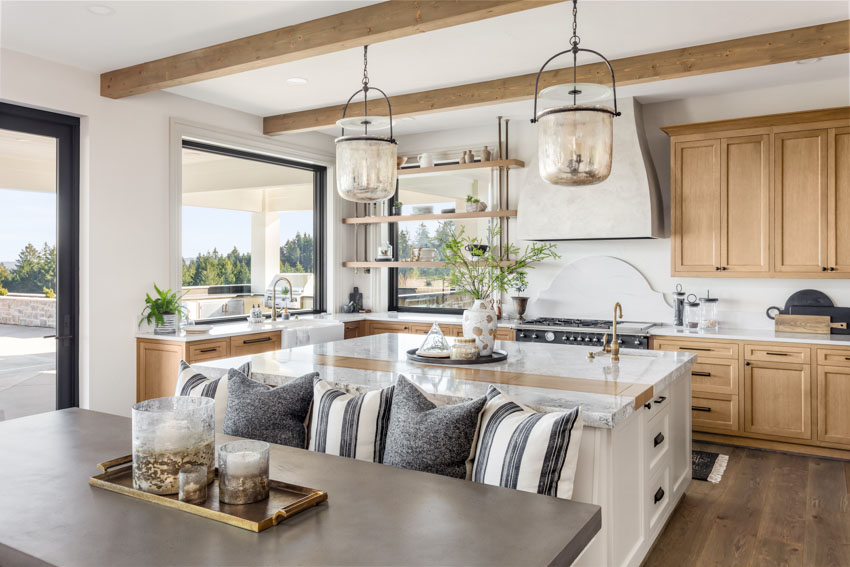
Poplar shaker cabinet doors: This door style is a well-liked choice for kitchen cabinets because this material is hardwood that is widely available and easy to work with. Poplar shaker style cabinet doors are also reasonably priced, making them a good choice for economical cabinetry.
The shaker-style door is also famous because it is simple and elegant. The door comprises four panels that are joined together with rails and stiles. The door is a versatile material that can be stained or painted and used in both traditional and contemporary settings.
The shaker-style door’s classic design is also a timeless look that will never go out of style. It features plain, un-beveled rails and recessed square center panels, which can complement traditional, transitional, and contemporary themes.
Their clean and straightforward appearance allows them to be used in many applications, including kitchen cabinet doors that add a contemporary flair to any cabinets.
Unfinished Poplar Cabinets
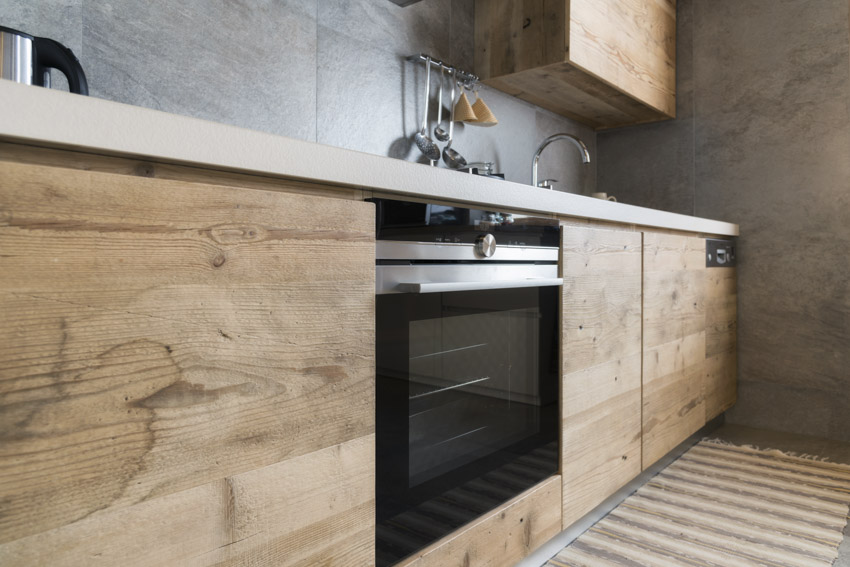
These cabinets are a great option if you want something durable and stylish. Additionally, it is a light-colored wood that can brighten a kitchen space.
However, this material is a soft wood, so it is more susceptible to scratches and scuffs than harder woods like oak or maple. It may require more upkeep than other types of kitchen cabinets, as they may need to be sanded and stained more frequently to maintain their appearance since they can turn yellow over time.
This cabinetry type can be left unfinished; its smooth, close-grain structure and light color give it a clean and finished look. Unfinished cabinetry allows you to customize the look of your kitchen. There are many benefits to choosing unfinished types
One advantage is that you can stain or paint the cabinets to match your kitchen décor. You can also choose the different types of cabinet hardware that suit your needs and preferences. It often has visible knots, giving the cabinetry an unfinished look.
With the right finishes, these cabinets can provide any kitchen with an elegant and timeless look. These factors combine to make this material an excellent choice.
Stained Poplar
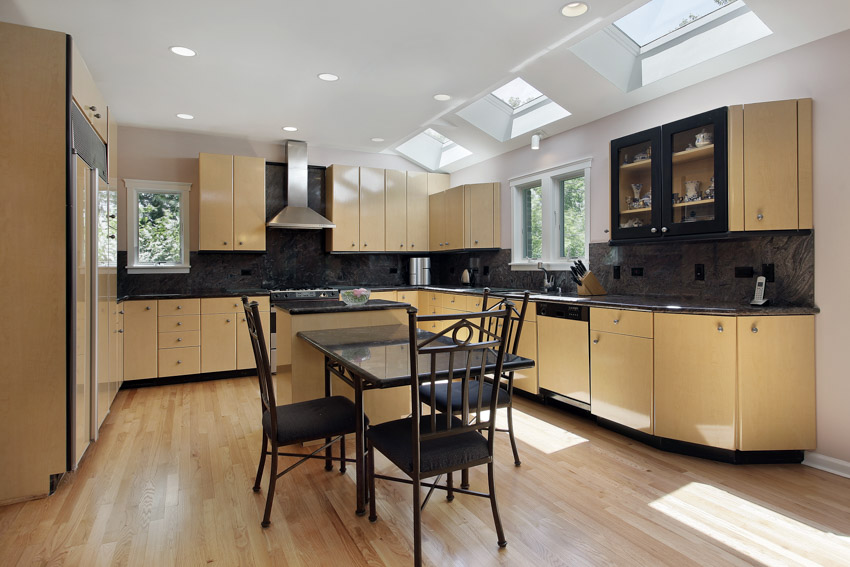
The natural colors of this wood offer a beautiful surface that can be stained to create an endless variety of effects. However, it doesn’t hold stains well compared to other types, such as white oak or pine.
Since stains don’t take well on this wood, this can cause uneven staining, random blotchiness, and bull surface if you aren’t careful when applying stains to your kitchen cabinets. So, it’s essential for you to apply the stain where there are no high spots or shadows first.
Sanding down any rough areas with 220 grit paper (or higher) before brushing lacquer over the surface will help bring out all those intricacies in the wood and will protect the wood from damage occurring during the cabinetry construction.
This material is a paint-grade wood with lower hardness values than most hardwoods, so it takes paint well because paint doesn’t soak into the wood, but stains do. If you want your project to turn out well, it’s best not to use lighter variants of the material, such as white poplar, because it is cleaner and softer.
The lighter shades of this wood are more difficult to stain and require much attention during the application, while darker colors don’t show as many blotchy surfaces with wood stains since they have higher hardness.
Is Poplar Good For Cabinets?
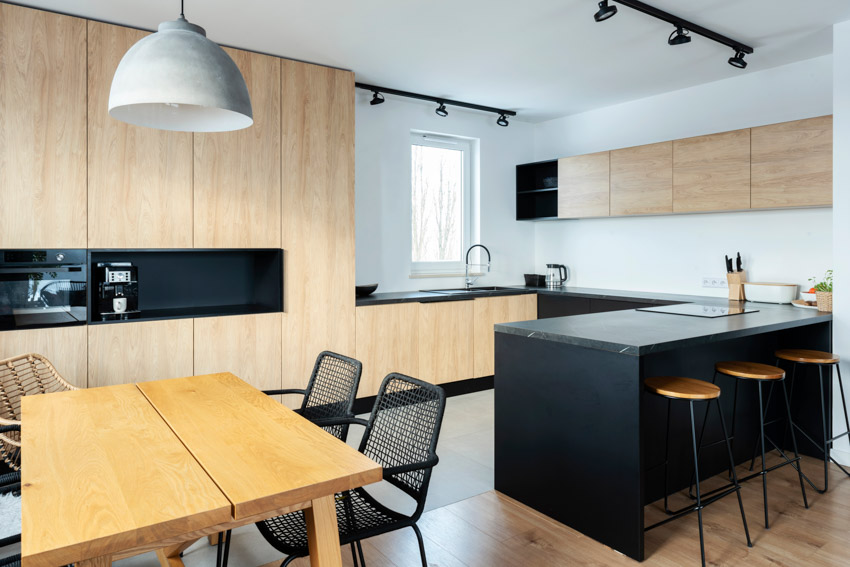
As a homeowner, you want to ensure your kitchen is as stylish and functional as possible. A critical aspect of the kitchen is the cabinetry. When choosing, you may wonder if it is a good option and whether these cabinets will stand up to the wear and tear of daily use.
Choosing suitable materials for the cabinets is one of the most important decisions when planning a kitchen renovation. There are factors to consider in opting for the wood to use, including durability, cost, and aesthetics.
Poplar wood is a common choice for kitchen cabinets due to its availability, affordability, workability, and attractive grain pattern. However, it is a softwood susceptible to water and heat damage.
As a result, it is vital to take care when cleaning these cabinets and to avoid using harsh chemicals or abrasive scrub pads. With proper care, this cabinetry option can provide the kitchen with years of beauty and function. This wood is fine for painted kitchen cabinets that don’t receive much wear.
This soft nature makes it more prone to tears than hardwoods like oak or maple. To avoid tearing, drilling and other woodworking tasks should be done at a slow feed speed. For sanding, it is important to start off on 80 grit before moving up through 150, then 300, and finally 400, which will give you beautiful results.
Poplar Vs. Birch Cabinetry
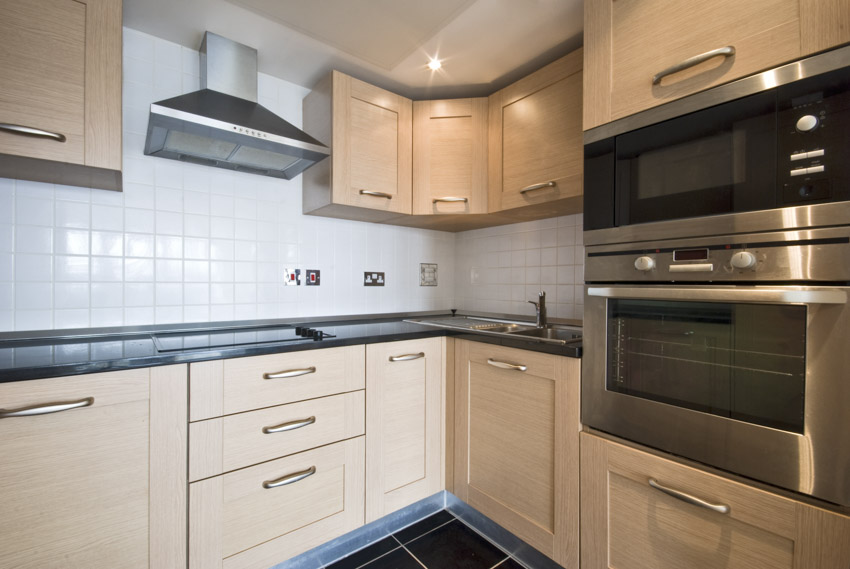
The two most inexpensive hardwoods are poplar and birch. Both kinds of wood come from quicker-growing species, making them sustainable choices for kitchen cabinetry in addition to being affordable options when compared with other types of wood.
Birch is widely used due to its affordability and accessibility. The white variant is less dense, used for most utility woodwork, and is the cheaper choice for cabinetry; Birch is better suited for flooring projects.
Birch has straight or slightly wavy grain with tiny pores, making it smooth in texture. The birch sapwood is almost white, and its heartwood has a light reddish-brown tone. Poplar, on the other hand, has a pale yellowish wood, sometimes with streaks of green and gray. Both poplar and birch kitchen cabinets have a fine grain and take paints and treatments well.
Poplar trees have a shorter cultivation time than Birch, meaning it is a less dense wood than Birch. Its lower density and lack of knots also make it a popular option for plywood, and woodworkers often use it for decorative elements, making it a trendy choice.
Poplar Vs. Maple Cabinetry
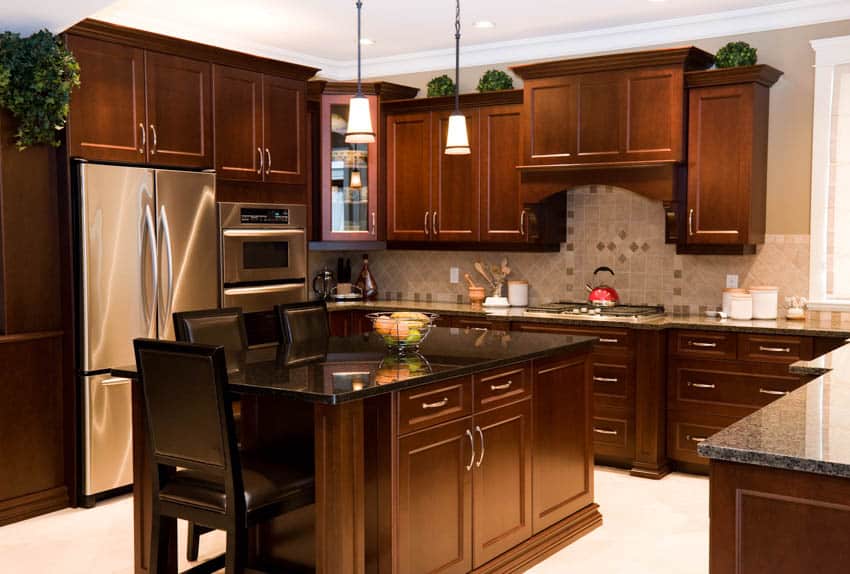
Poplar and maple are both hardwoods, but the difference between the two hardwoods is in their strength. Maple wood is much stronger and performs better under stress than poplar wood.
Maple can withstand heavy loads, while poplar dents easier, breaks under load, and compresses more easily. It has slightly better flexibility and tends to be easier to work with, thus making it notable for its use in cabinetry.
Soft maple mills are a bit harder, but take paint much better and get a smoother finish. Maple is also more dimensionally stable than poplar. The integrity dent resistance of maple is superior to poplar.
However, maple joints in face frames and doors tend to develop hairline cracks more frequently than in poplar. This is due to the higher density of maple, which makes it less stable with regard to seasonal changes in temperature and humidity. The joints between pieces of poplar are less likely to open or loosen over time.
Poplar and maple kitchen cabinets absorb stain finish differently. It is difficult to achieve an even finish using stain on poplar; most of the time, the result is a blotchy finish.
On the other hand, maple stains easily, and depending on the type of maple, the grain patterns can vary from almost invisible to prominent—hard maple sands to a smoother finish than poplar.
See more related content in our article about walnut kitchen cabinets on this page.

